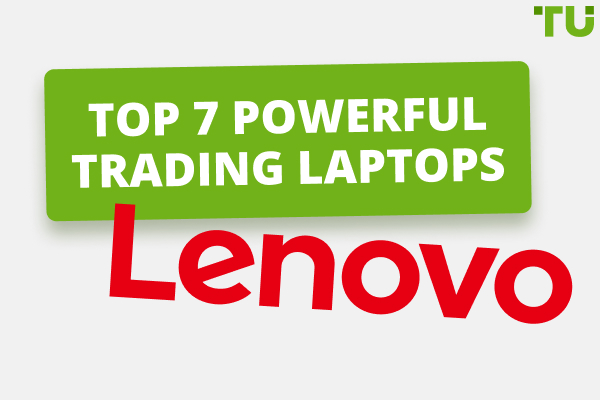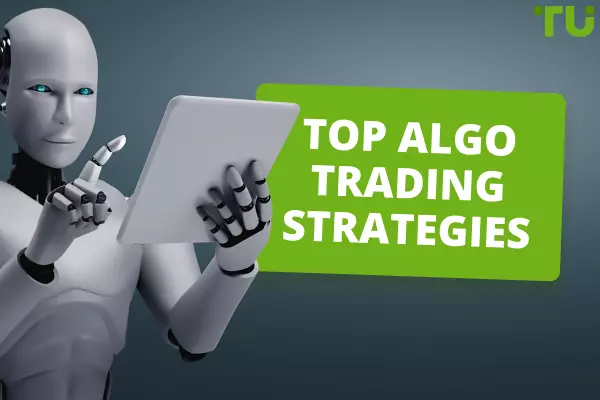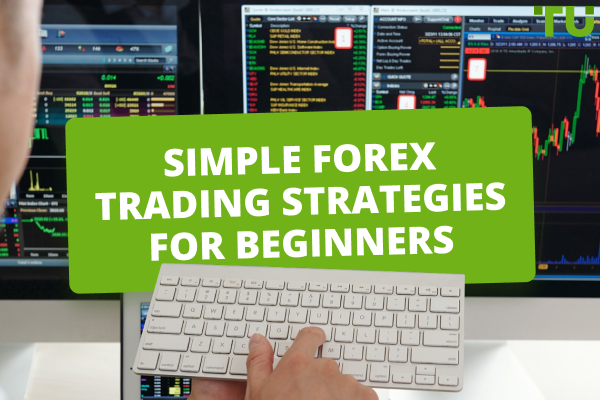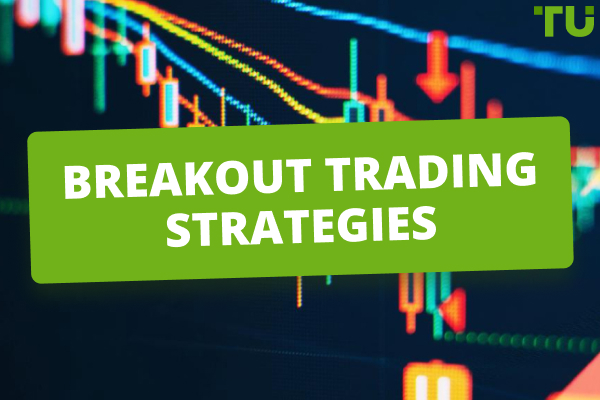How to make money on commodities
Many people know about Forex, and how to make money on exchange rates, and cryptocurrencies. However, large players often invest in commodities as well. These include energy carriers, precious metals, agricultural products, and so on. Each type of exchange commodity has its own characteristics and factors that determine the price movement. These factors can be taken into account and can predict how the value of the asset will change.
Commodity trading can bring good returns to experienced investors. You can trade raw materials directly, buy/sell futures or enter into CFD contracts. Each method has its pros and cons, but it’s easy to understand them. In this article, the Traders Union will explore the concept of commodities, their types, and the easiest way to make a profit on them.
Start trading commodities right now with RoboForex!What is a commodity?
Unlike most financial instruments, commodities have a distinct physical form. In other words, you can touch them. For example, bonds and stocks give the owner certain rights (to the repayment of the debt and to the share in the company, respectively), but a barrel of oil is just a barrel of oil, and a pound of gold is a real ingot of the specified mass.
There are many markets for commodities, they are traded on all major exchanges and by most brokers. Interestingly, the first stock exchanges that appeared in medieval Europe naturally traded only commodities, mainly spices. Then two main characteristics of assets of this type were identified — standard nature and fungibles.
The specifics of exchange trading determined that raw materials should not be perishable and have the property of transportability with the possibility of dividing into batches (lots). Today, these features of commodities are still relevant. In addition, it is now possible to trade perishable goods, this is made possible by modern storage technologies and advanced logistics.
Thus, commodities are assets that are mostly raw materials, that is, natural resources and agricultural products. The parameters of standard nature and interchangeability indicate that it does not matter where the oil, copper, or wheat is produced. If the product is traded on the stock exchange, it always meets the generally accepted quality parameters.
Today, there are hundreds of assets traded in the commodity markets, together they account for at least 20% of world trade. At the same time, prices for exchange goods are determined by global supply and demand. Therefore, conditions are created for them on the exchange that are as close as possible to ideal competition. And these assets are volatile enough to make money on price fluctuations in any time frame, including the short term.
Main types of commodities
Commodity types can be defined based on various criteria. As stated, these are mainly raw materials — minerals, their derivatives, and basic products produced by the agriculture segment. Commodities also include mass-produced products like chemicals (e.g., fertilizers) and computer memory chips. There are many classifications of exchange commodities with varying degrees of split, for example, there is a universal classification by Alfred Marshall:
Hard commodities. This is everything that is extracted from the bowels of the earth, for example, oil, coal, gas, gold, and silver.
Soft commodities. These are grown products and products obtained from grown ones, for example, wheat, rice, cattle, and milk.
Marshall’s classification is the simplest, but it does not give an idea of the whole variety of exchange commodities. And this is important for compiling an optimal investment portfolio and diversifying risks. Other types of commodities are discussed below.
Energy raw materials
This is not only oil, gas, and coal, but also their derivatives such as processed or refined fuels, such as diesel and gasoline. A key feature of this group of commodities is that they are difficult to replace. As much as the Greens would like us to move away from gasoline cars, today almost the entire global car fleet is a consumer of oil. No matter how much Europe strives to switch to environmentally friendly energy sources, almost all of it is heated by gas.
Oil is by far the most traded commodity in the world. It covers 33% of the world’s energy needs and 75% of this volume is bought through exchanges. There are over 13,000 oil tankers in the world, which is more than 32% of the world’s merchant fleet. Many factors affect the price of oil, so the product is extremely volatile.
Non-ferrous and precious metals
A key category is metals, which include- platinum, gold, silver, nickel, and aluminum. All of them are actively traded in the commodity markets and they have several unique features.
First, non-ferrous and precious metals are not subject to corrosion, they do not deteriorate and can be stored forever. Second, they are used in jewelry, computer technology, and automobiles, and these areas have been increasing the scale of production throughout history, that is, the trend is stable and is unlikely to change. Third, precious metals are used to form national reserves.
In general, these type of commodities are less volatile compared to energy commodities and is better suited for long-term investment. Therefore, it is recommended to have precious metals in your portfolio. Moreover, this group of resources has specific pricing (for example, supercycles).
Cereals and oilseeds
Other types of exchangeable trading goods include rice, wheat, rye, corn (as cereals), as well as cotton and flaxseed, soybeans, and soybean oil (the so-called oilseeds and products of their processing). These are mere examples, in reality, there are many more such assets.
Obviously, such goods are conceptually different from energy resources and metals. First, their receipt on a global scale is seasonal. Second, to harvest grain, it must not just be extracted, as in the case of oil, but first grown, it takes additional time and resources (labor, fertilizers, etc.). All this increases the volatility of grains and oilseeds in the market.
On the other hand, there are unpredictable factors. For example, crop failure or famine that is associated with war or disaster. At such times, prices for commodities in a given category can fluctuate in unthinkable ranges. And this is a great opportunity to make money.
Textiles and industrial raw materials
Usually, when thinking about what commodities are and how to classify them, textiles and industrial products are classified into different categories. But in this article, they are combined because these are raw materials with similar characteristics.
Textiles include, for example, silk, wool, cotton, and jute. Industrial raw materials include lumber, rubber, and acids (for example, sulfuric). There are dozens of products in these categories. What unites them is they are finished products, representing the basic level of modern production. That is, for example, no one needs sulfuric acid by itself, but, being a powerful oxidizing agent, it is used in metallurgy, the oil industry, and the production of fertilizers.
Exchange commodities in this group are extremely volatile because their prices depend on many factors such as economic and political variables. By adding futures, for example, for cotton or rubber, to your investment portfolio, you can easily protect yourself from drawdowns in other assets.
Other commodities
It is impossible not to mention other types of raw materials and finished products. They are less popular and are not traded in such large volumes as oil, gold, or cotton, but still they are quite in demand among investors.
For example, food products such as sugar, coffee, and cocoa. Meat and animals (primarily cattle) are also traded on world exchanges. You can earn on these assets by predicting price movements based on global and regional political events and economic volatility.
Risks and opportunities for investors
World markets for exchanging goods are called commodity exchanges. The largest of these venues are the Chicago Board of Trade and the Chicago Mercantile Exchange. There is also the Malaysian Exchange, the London Metal Exchange, the New York Mercantile Exchange, and the St. Petersburg International Mercantile Exchange. The activities of commodity markets are controlled by authorized bodies, for example, the CFTC in the United States and ESMA in the European Union.
Individuals (traders) can access these exchanges through brokers. If the broker is licensed and has been operating for a long time, there is no danger of the trader losing his finances as a result of fraud. But all the risks typical of stock trading remain. Although technically there is only one risk, which is you can lose as a result of an incorrect forecast. In contrast, if the forecast is correct, the trader can earn a lot.
Example. Brent crude oil (the most popular on the exchange) in the last third of January 2023 cost $64.89 per barrel. Exactly one year later, in the last third of January 2023, the price of a barrel exceeded $114. A little earlier, in April, the rate was 121.67 USD/barrel. That is, the price of a barrel almost doubled in a year. Let’s imagine that in January 2023 you bought 100 barrels, and in January 2023 you sold them. The purchase price was $64.89, the sale amount was $121.67. Your profit is 12167-6489=5678 USD. Minus a small percentage of the exchange and the withdrawal fee, but in any case, you can obtain a good amount. And this is only one asset, and you can have more than a dozen of them in your portfolio.
Many brokers today allow you to trade futures and CFDs on commodities with leverage. Imagine that in the example above, you bought a contract for the same amount, but with x10 leverage. That is, your final profit will then be not 5678, but 56780 US dollars. Of course, the situation also has a downside.
For example, in January 2020, Brent oil cost $68.64 per barrel, and then it began to fall rapidly, and by April the price of a barrel was less than $20. The asset rose to the initial mark of $68 only by the spring of 2021. In this situation, you can lose a lot of money, especially if you use leverage. After all, the broker will not allow you to lose his funds, so he will forcibly close the contract when the price starts to fall sharply. And everything that he loses will be debited from your account.
Of course, these risks can and should be leveled with special tools like stop loss and take profit. But it is impossible to completely eliminate the possibility of losing. It is impossible to take into account all the factors affecting the cost of raw materials. In January 2023 alone, Brent fell and rose in price several times, ranging from $106 to $117.97 per barrel.
This is oil, the most traded resource. The prices of commodities such as cotton and rubber can fluctuate wildly also. For example, the lumber price tag in the first half of 2023 fluctuated a lot, from $536.99 to $1464.40 per 1,000 board feet (1 board foot is 144 cubic inches, as lumber lots are traditionally measured on the exchange).
To summarize, the main plus of trading in commodities is the huge profit potential. In addition, since there are a lot of goods and there are different trading options (futures, CFDs, and raw materials), there are also many opportunities to diversify risks. On the other hand, they cannot be completely excluded, and trading with leverage is associated with maximum risk.
How to make money on commodities?
Commodities are traded through a broker. Typically, brokers offer two trading options: commodity futures and CFD contracts. However, an individual can buy and sell some types of raw materials directly. Consider the pros and cons of each option.
Direct trade with raw materials
An individual can buy a bar of platinum, gold, or silver. Technically, this is not difficult and is carried out through a bank or a licensed organization. For example, several large online dealers operate in the United States, including APMEX, JM Bullion, and banks with the best gold rates such as TD Bank and Scotiabank. Through them, gold can later be sold, but it is more advantageous to do this with dealers because the prices for buying and selling differ more strongly with banks.
But, for example, an individual cannot buy oil under any circumstances. Because the state establishes certain storage and processing rules for this raw material, which can only be observed by large oil-producing and oil refining organizations. Grain is also not easy to handle; so you can buy it, but where would you store it? This is an important point because for a commodity to be sold at a good price in the future, it must retain its original properties.
Thus, direct trading in commodities for individual traders is often extremely difficult. In addition, the purchase of physical bars of precious metals does not provide any advantages over CFD contracts and commodity futures.
Commodity futures
Futures is a contract under which the seller is obliged to supply the buyer with a product at a specified price within a specified period, and the buyer is obliged to purchase this product under the specified conditions. The essence of the futures is that it allows you to fix the value of the product, protecting yourself from exchange rate fluctuations. Roughly speaking, the owner of the bakery enters into a contract with the farmer that in a year he will sell him 100 kg of wheat at the current price. What will happen to the exchange rate of wheat in a year is no longer important, the farmer will sell the wheat exactly at the price agreed upon at the time of the contract.
Another advantage is that you do not have to pay for futures. In the sense that when concluding a contract, the trader pays a commission for the transaction, and the so-called collateral (10-40% of the contract value) is blocked on his account. When the position is closed, the collateral on the account will unfreeze. That is, for example, with a futures price of $100, you need to have an average of only about $20 in your account. But keep in mind that the value of the margin may change, and if you suddenly do not have the required amount on your account, the broker will forcibly close the deal.
The main advantages of trading commodities are low commissions, built-in leverage due to collateral, unlimited short trading, and the possibility of hedging. The main disadvantage is that it will not be possible to wait out the unprofitable period, as with stocks. At the same time, futures can be both profitable to hold until their maturity and play on the volatility of the asset.
CFD contracts
The essence of the contract for (price) differences (CFD) is that the seller is obliged to transfer to the buyer the difference in the price between an asset at the time of the conclusion of the contract and at the time of closing the transaction. The crux is the seller is not obliged to own the goods (here, raw materials), and the buyer cannot demand them nor is he obliged to purchase them. That is, they actually trade the same price difference between two points in time.
Based on that definition, it becomes clear that CFD trading in commodities is the easiest option for a trader. If the price has increased during the contract, the trader receives this difference as a profit. If the price has decreased, the trader will have to pay the difference to the seller. It is worth noting that CFD contracts usually do not have a fixed expiration date and are terminated at the request of one of the parties.
CFDs can be traded by any trader through a licensed broker. This type of trading has minimum requirements for opening an account and an initial deposit. But there is also a minus, which is, there is a high risk of losing funds if the price goes in the wrong direction. This is margin trading, which increases both potential profit and potential loss.
The best brokers for trading commodities
Now that you know what commodities are and how best to trade them (futures and CFDs), you need to know with which platform is the best to cooperate. After all, there are not so many commodities brokers who operate under the license of an international regulator and offer really loyal conditions for trading in exchange commodities.
RoboForex is the best broker for CFD trading
The RoboForex broker allows you to trade contracts for soft commodities with a minimum deposit of 100 USD and leverage up to 1:20. In total, more than 100 assets are represented in the category. Metals trading includes 10 instruments, and the minimum deposit is only 10 USD. Also, spreads are the lowest on the market, from 0 pips. Execution orders are from 0.1 seconds.
Energy CFD spreads also start from 0 pips, the minimum deposit is 10 USD, and the maximum leverage is 1:100. They offer optimal conditions for intraday trading. Please note that the broker has a demo account and a proprietary CopyFX trade copying service.
Interactive Brokers is the best for commodity futures trading
The broker offers hundreds of assets in the commodity futures group, including energy, precious metals, and agricultural products. The platform has the lowest commissions for futures, which is 0.25-0.85 dollars per contract. There is access to the 30 largest commodity markets.
They offer more than 100 order types, ranging from limit orders to the ones oriented to algorithmic trading. Inside the broker’s trading terminal there is a separate functionality for managing futures positions (ComboTrader and SpreadTrader), plus an index arbitrage counter. A separate service is provided with free investment portfolio analytics and an investor exchange.
FAQs
Can individuals directly trade commodities?
Yes, you can buy some commodities from a bank or dealer (for example, gold bars). But it is more profitable to trade commodity futures and CFD contracts. This can be done through any licensed broker that offers this service.
What are the advantages of trading futures and CFDs?
In both cases, you operate not with the resource itself, but with the price of it. Futures involves buying at a price fixed at the time of the conclusion of the contract, and CFD guarantees the receipt of the price difference for the period from the opening to the closing of the transaction (if the price followed the predicted direction).
What are the risks in trading commodities?
They are the same as in the case of Forex trading. A trader enters into a transaction, hoping that the price of an asset will change in a certain way. If he is right, he makes a profit. If the forecast is wrong, the trader loses the bet (and still pays the commission for the trade).
Where is the best place to trade commodities?
The easiest way to do this is through brokers. But it is important that the broker acts officially and has a license from an international regulator. The most comfortable conditions for trading commodity futures are offered by RoboForex, while the most profitable CFD contracts are offered by Interactive Brokers.
Team that worked on the article
Rinat Gismatullin is an entrepreneur and a business expert with 9 years of experience in trading. He focuses on long-term investing, but also uses intraday trading. He is a private consultant on investing in digital assets and personal finance. Rinat holds two degrees in Economy and Linguistics.
Gismatullin has been an author at Traders Union since 2019. His focus is creation of detailed reviews of brokerage companies and cryptocurrency exchanges, as well as analytical and educational articles on finance.
Rinat’s motto: Always be open to new experiments. By overcoming the hardships you will reach the stars that open to those who seek.
Dr. BJ Johnson is a PhD in English Language and an editor with over 15 years of experience. He earned his degree in English Language in the U.S and the UK. In 2020, Dr. Johnson joined the Traders Union team. Since then, he has created over 100 exclusive articles and edited over 300 articles of other authors.
The topics he covers include trading signals, cryptocurrencies, Forex brokers, stock brokers, expert advisors, binary options. He has also worked on the ratings of brokers and many other materials.
Dr. BJ Johnson’s motto: It always seems impossible until it’s done. You can do it.
Mirjan Hipolito is a journalist and news editor at Traders Union. She is an expert crypto writer with five years of experience in the financial markets. Her specialties are daily market news, price predictions, and Initial Coin Offerings (ICO). Mirjan is a cryptocurrency and stock trader. This deep understanding of the finance sector allows her to create informative and engaging content that helps readers easily navigate the complexities of the crypto world.











